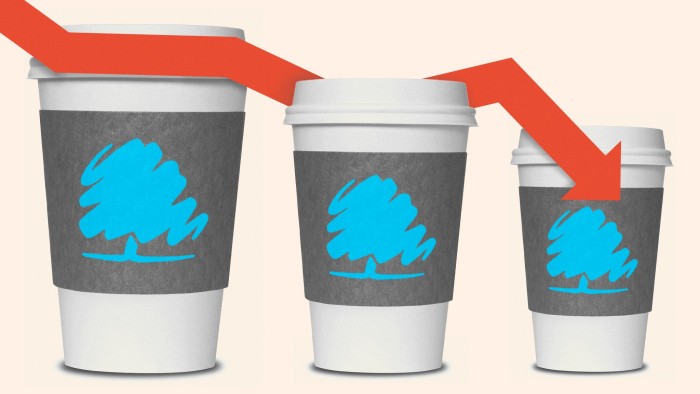How (not) to explain economics to the public


Roula Khalaf, Editor of the FT, selects her favourite stories in this weekly newsletter.
I had some sympathy for UK chancellor Jeremy Hunt last week when he was teased for trying to explain inflation with coffee cups and a black felt pen. I’ve done a few explainer videos myself over the years, so I know it’s hard to get the tone right.
You want to sound as if you’re talking to a smart friend in the pub, but it’s easy to sound like you’re pandering to children instead. I also think that making economics more understandable is a worthy endeavour, especially right now. Sadly, Hunt’s video was a perfect example of what not to do.
Why is it worth trying to explain economics better? Because the profession suffers from what Andy Haldane, former chief economist at the Bank of England, calls a “twin deficit”, of understanding and of trust.
In a UK survey in 2019, 40 per cent of respondents said it had become more difficult to understand economics when it comes to making informed decisions for voting in elections and referendums. Only 14 per cent said it had become easier. An in-depth study in 2020 found that many members of the UK public didn’t understand concepts such as gross domestic product and disbelieved statistics like the unemployment rate.
Part of this is a translation problem. Most economic concepts are not complicated, but they’re couched in a language that makes no sense to people who don’t speak it.
Economists keep saying the UK has a problem with rising economic “inactivity”, for example, but how many people know this group includes students and carers? If someone had called me inactive when I was on maternity leave, I would have thumped them. “People who aren’t working or looking for work” would be a clunkier label but immeasurably clearer.
There was another example last week, when the same set of statistics led to the headline “UK wages rising at near record pace” from one news organisation and “Real-terms UK pay fell at fastest rates for 20 years” from another. Neither are wrong. One focused on the cash increase, the other on pay after inflation was taken into account. But you can see why people might be confused.
The study in 2020 found that people don’t know what the terms “nominal” and “real” mean, and mistrust them as a result. “I’ve heard about this ‘real terms’ thing,” one participant said. “[I] keep hearing it on the news and things like that. But I think it’s just word play, a little bit. I don’t really buy into it.”
Misunderstanding breeds mistrust, something journalists like me could do more to address. But politicians don’t help when they twist statistics to mislead. Former prime minister Boris Johnson, for example, was chastised by the UK Statistics Authority last year for saying there were more people in employment than when the pandemic began. He was choosing to refer only to payrolled employees (a figure that ignores the self-employed). In total, there were actually about 600,000 fewer people in work at the time.
The good news is that there are practical ways to improve public understanding and trust of economic statistics. The Behavioural Insights Team, owned by the innovation foundation Nesta, ran a recent experiment with the Office for National Statistics that had promising results.
The researchers presented labour market statistics in six different ways to different study participants, then tested their comprehension. The study found that simpler language which related the statistics to real world examples led to better comprehension scores. This doesn’t mean “dumbing down”: in fact, more information can be helpful. A version that explained how exactly the statistics were collected led people to report higher levels of trust.
All of which brings us back to Hunt and his coffee cups. The big problem wasn’t that he was patronising. It was that he blamed a set of global factors for the rise in inflation, such as the pandemic and the war in Ukraine, then said the government would cut inflation in half by the end of the year through policies such as investment in renewables and nuclear.
But policies like these will take years to have any effect. In truth, inflation is set to halve by the end of the year anyway — the Office for Budget Responsibility forecasts inflation will be about 3.8 per cent in the fourth quarter.
This is propaganda masquerading as explainer — just the sort of thing that leaves the public more annoyed and more mistrustful. Anyone can see the flaw in a story that accepts none of the blame for inflation going up, but claims all the credit for it going back down. You don’t need to be an economist to know when you’re being taken for a fool.
Comments